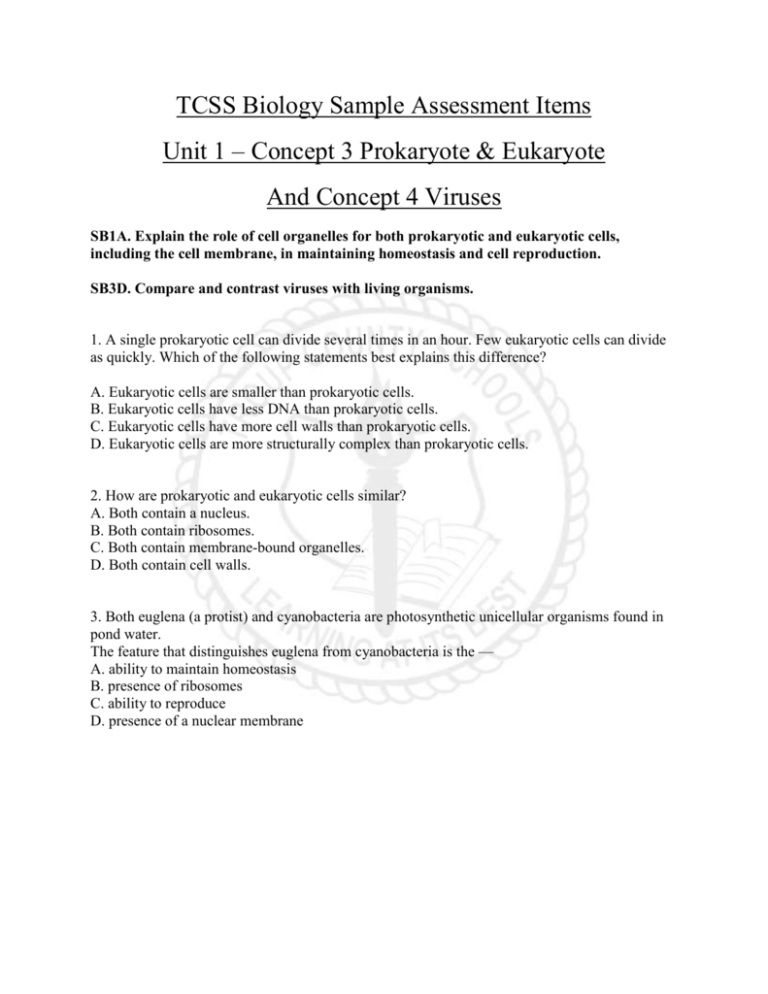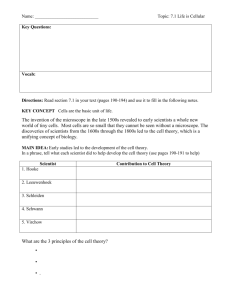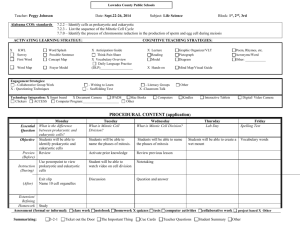Concept 3&4
advertisement

TCSS Biology Sample Assessment Items Unit 1 – Concept 3 Prokaryote & Eukaryote And Concept 4 Viruses SB1A. Explain the role of cell organelles for both prokaryotic and eukaryotic cells, including the cell membrane, in maintaining homeostasis and cell reproduction. SB3D. Compare and contrast viruses with living organisms. 1. A single prokaryotic cell can divide several times in an hour. Few eukaryotic cells can divide as quickly. Which of the following statements best explains this difference? A. Eukaryotic cells are smaller than prokaryotic cells. B. Eukaryotic cells have less DNA than prokaryotic cells. C. Eukaryotic cells have more cell walls than prokaryotic cells. D. Eukaryotic cells are more structurally complex than prokaryotic cells. 2. How are prokaryotic and eukaryotic cells similar? A. Both contain a nucleus. B. Both contain ribosomes. C. Both contain membrane-bound organelles. D. Both contain cell walls. 3. Both euglena (a protist) and cyanobacteria are photosynthetic unicellular organisms found in pond water. The feature that distinguishes euglena from cyanobacteria is the — A. ability to maintain homeostasis B. presence of ribosomes C. ability to reproduce D. presence of a nuclear membrane 4. 5. A feature of viruses that separates them from the living world is the fact that they A. have DNA B. contain proteins C. can make other organisms sick D. lack the cellular machinery necessary to reproduce on their own 6. Which of these best completes this concept map? A. an animal cell B. a prokaryotic cell C. a virus D. a plant cell






